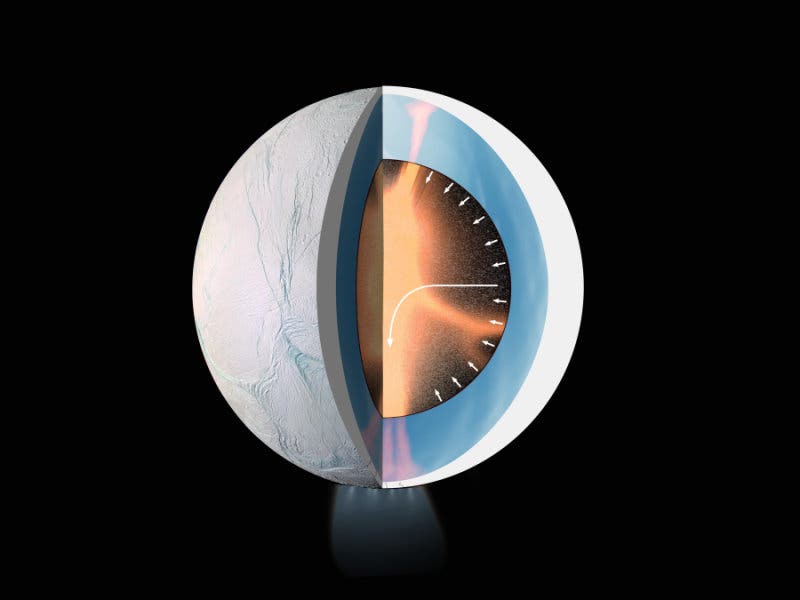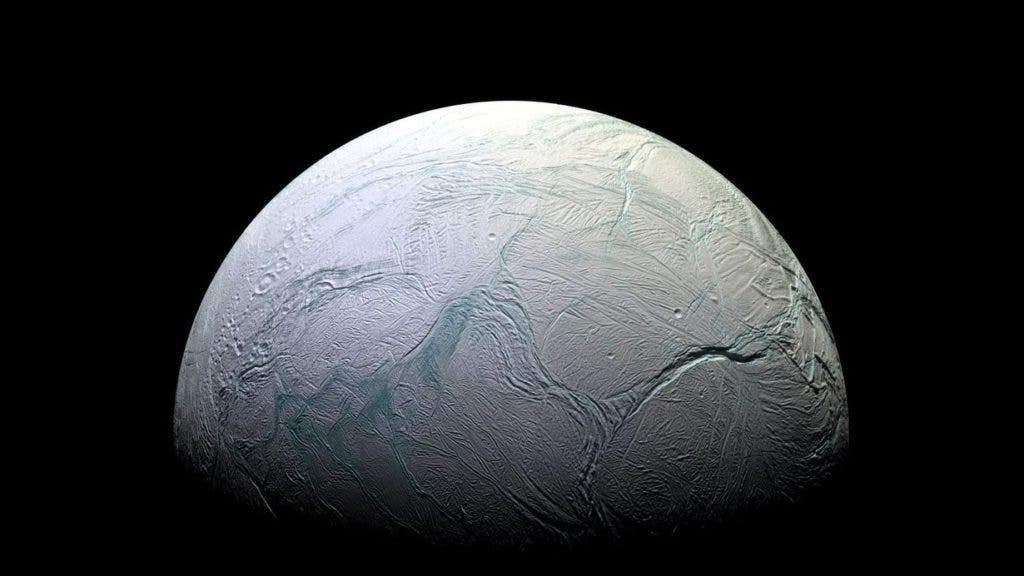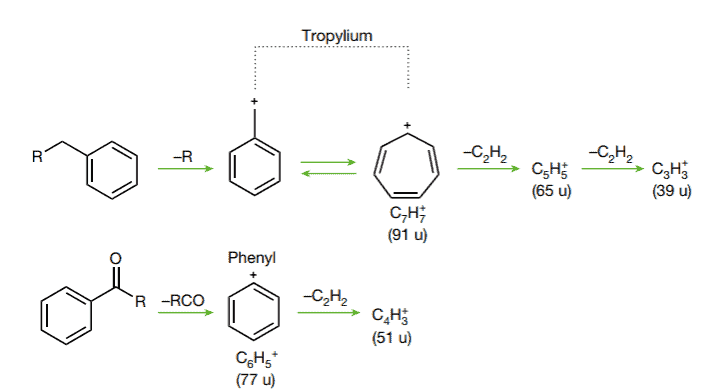Data beamed back by the Cassini spacecraft reveals that Enceladus, Saturn’s sixth-largest moon, isn’t shy about blasting large organic molecules into space.

Image credits NASA/JPL-Caltech/Space Science Institute/LPG-CNRS/Nantes-Angers/ESA
Mass spectrometry readings beamed back by NASA’s Cassini craft show that Enceladus is bursting with organic molecules. The moon’s icy surface is pockmarked with deep cracks that spew complex, carbon-rich compounds into space. Scientists at the Southwest Research Institute (SwRI) say these compounds are likely the result of interactions between the moon’s rocky core and warm waters from its subsurface ocean.
Why so organic?
“We are, yet again, blown away by Enceladus,” said SwRI’s Dr. Christopher Glein, co-author of a paper describin the discovery.
“Now we’ve found organic molecules with masses above 200 atomic mass units. That’s over ten times heavier than methane. With complex organic molecules emanating from its liquid water ocean, this moon is the only body besides Earth known to simultaneously satisfy all of the basic requirements for life as we know it.”
The Cassini mission, a cooperative project of NASA, ESA (European Space Agency) and the Italian Space Agency, is widely-held to be one of the most ambitious space exploration missions we’ve ever embarked upon. Launched on October 15, 1997, Cassini spent some 13 years studying the gas giant and its moons. The craft also flew by Venus (April 1998 and July 1999), Earth (August 1999), the asteroid 2685 Masursky, and Jupiter (December 2000), before settling in on Saturn’s orbit on July 1st, 2001.

On September 15, 2017, NASA de-commissioned the aging craft with a bang: they deorbited Cassini, letting it fall towards Saturn’s core and burn up in its atmosphere.
However, the wealth of information this tiny craft beamed back from its travels is still giving astronomers a lot to work on. Before its fiery demise, Cassini sampled the plume material ejected from the subsurface of Enceladus. Using its Cosmic Dust Analyzer (CDA) and the SwRI-led Ion and Neutral Mass Spectrometer (INMS) instruments, the craft analyzed both the plume itself and Saturn’s E-ring — which is formed by ice grains from the plumes trapped in Saturn’s gravity well.

Image credits F. Postberg et al., 2018, Nature.
During one of Cassini’s particularly close flybys of Enceladus (Oct. 28, 2015), the INMS detected molecular hydrogen in the moon’s plume ejections. Previous flybys also revealed the presence of a global subsurface ocean and a rocky core. This was the first indication that the moon can boast active geochemical below the surface, most likely between water and rocks in hydrothermal vents.
The presence of hydrogen was also grounds for great enthusiasm at NASA — the element is a known source of chemical energy for microbes living in hydrothermal vents here on good ol’ Earth.
“Once you have identified a potential food source for microbes, the next question to ask is ‘what is the nature of the complex organics in the ocean?'” says SwRI’s Dr. Hunter Waite, INMS principal investigator and paper coauthor. This paper represents the first step in that understanding — complexity in the organic chemistry beyond our expectations!
The findings are significant enough to influence further exploration, Glen believes. Any spacecraft that flies towards Enceladus in the future should make a point of going through its plume to analyze these complex organic molecules with a high-resolution mass spectrometer to “help us determine how they were made.”
“We must be cautious, but it is exciting to ponder that this finding indicates that the biological synthesis of organic molecules on Enceladus is possible.”
The paper “Macromolecular organic compounds from the depths of Enceladus” has been published in the journal Nature.






